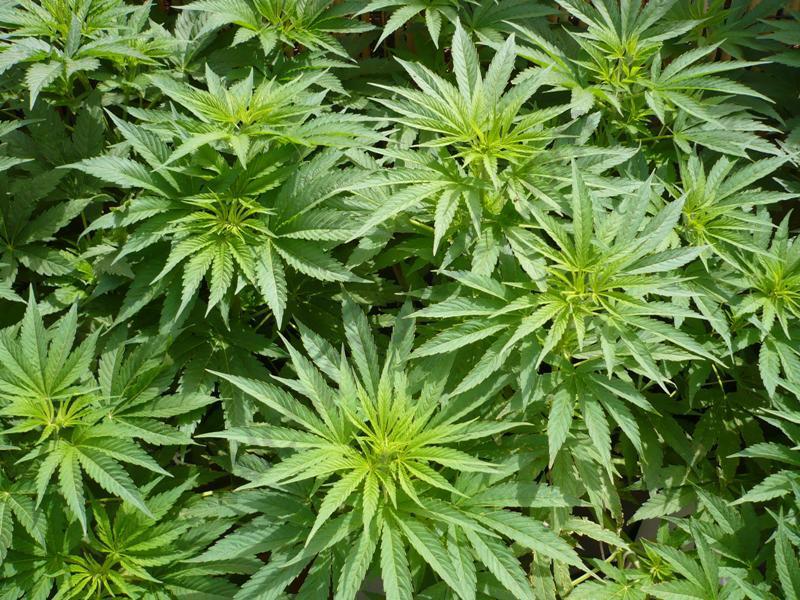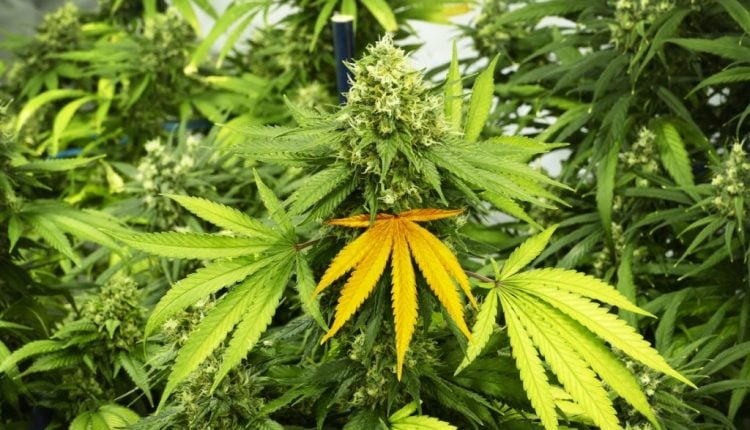What Is Leaf Death?
Leaf death on your marijuana plants can come as a surprise, but you will know it’s coming. If you see discoloration (yellow, brown, gray, sometimes even red), and edges curling, the leaves falling off may soon follow. The key is to diagnose the problem as quickly as you can so you can set things right for your marijuana plant to continue to a healthy harvest.
If you have begun to notice the leaves on your marijuana plants start to die and drop off, there are three possible causes. It can be due to an unbalanced pH level, watering your plants too much or too little, or nutrient imbalances. The key to fixing the problem is diagnosing the problem, so begin by checking the pH levels in order to start determining what exactly is causing the leaf death on your marijuana plant.

The Causes of Dying Cannabis Crops
pH level imbalance
The pH level is more important than many new growers realize – it handles the intake of nutrients and water, and, therefore, has a strong effect on nutrient toxicities, deficiencies, and imbalances. In general, it’s always a good idea to check the pH levels when you see any problems with your marijuana plant.
The pH level is simply a measurement of how alkaline or acidic something is, measuring it from 0 to 14 – the higher, the more alkaline; the lower, the more acidic. Ideally, the water you feed to your marijuana plants should be a perfectly balanced level of 7. The soil also should have a balanced pH level, or as close to it as you can come.
Download my free marijuana grow bible and learn to grow like a pro
Measuring the pH level is fast and simple, and needs to be done with relative frequency. If it’s too high or too low, you can adjust it accordingly with natural supplements or a store-bought product such as pH Up/Down. If you need to lower the pH level, you can also simply whisk your water to increase the oxygen level and, therefore, the pH level as well.
If you have measured and adjusted the pH levels and the problems with dying leaves persist, then you know it isn’t a pH level issue. Keep in mind that the ideal range for absorption of nutrients is a level between 6 and 7 for soil systems and between 5.5 and 6.5 for hydroponic systems.
Watering Issues
Once you have established that the pH level is indeed not the problem, move on to find out if water is causing the leaf death in your marijuana plants. When assessing the watering of your plants, it’s important to take into account which growing medium you are using. If watering is the problem, then it probably has something to do with the drainage or the amount of watering.
To determine if you have been watering your plants too much or too little, you should make sure that roughly 20% of the water you give your plant is draining out. Once 20% has drained out, you can leave it until the soil is once again dry – then water it again with the same technique. To determine if the soil is dry enough for another watering, put your finger down until the soil reaches your top knuckle and feel if it is dry up to that point. If so, it is safe to water your marijuana plants again.
Hydroponic setups will not have overwatering issues, but they could “drown” if there isn’t enough water in the oxygen. If you are growing with a hydroponic system, try placing an air stone into the water to ensure that there is plenty of dissolved oxygen.
Another issue that can arise from poor watering, draining, or temperature maintenance is root rot. You will recognize it from the brown, mushy, smelly roots. Use a product like Aquashield to banish the root rot.
Nutrient Imbalances
Once you have established that pH levels and watering aren’t the cause of your plant’s leaf death and other health issues, it is safe to assume that the cause must be a nutrient imbalance. Whether it is a deficiency or toxicity of a certain nutrient, you will need to research the difference symptoms of different nutrient problems to determine what the cause is and how to fix it.
